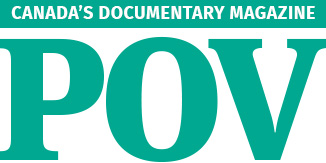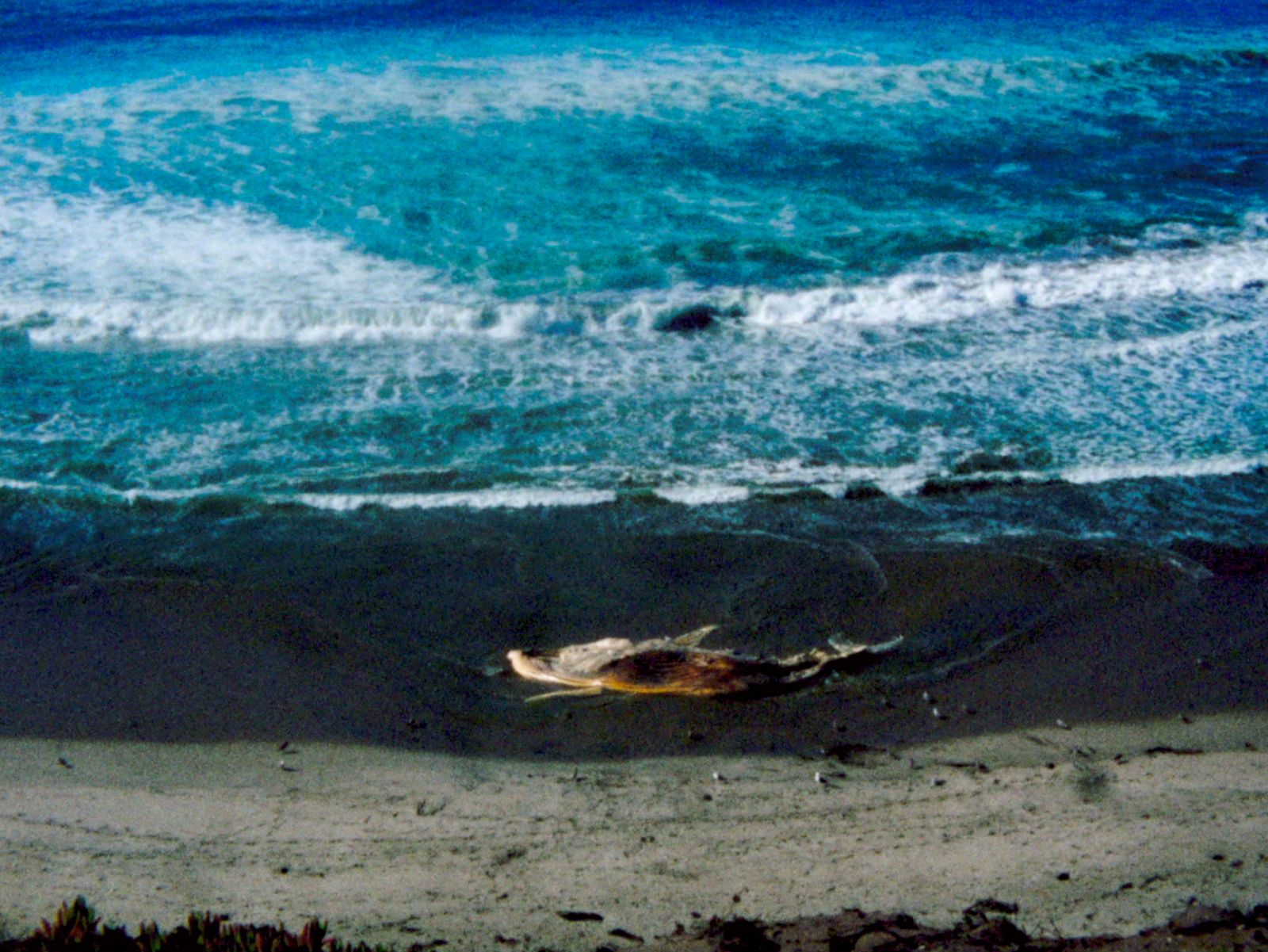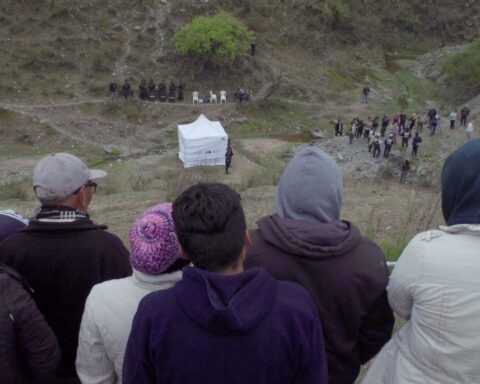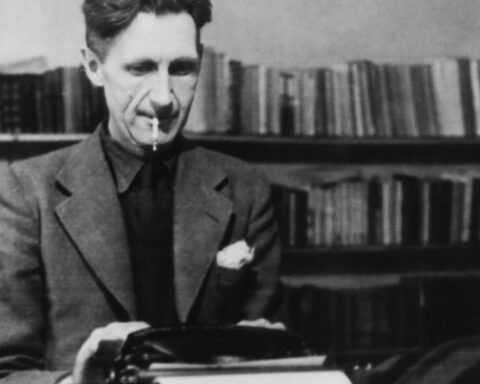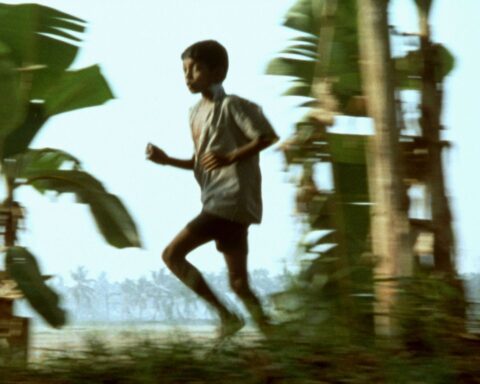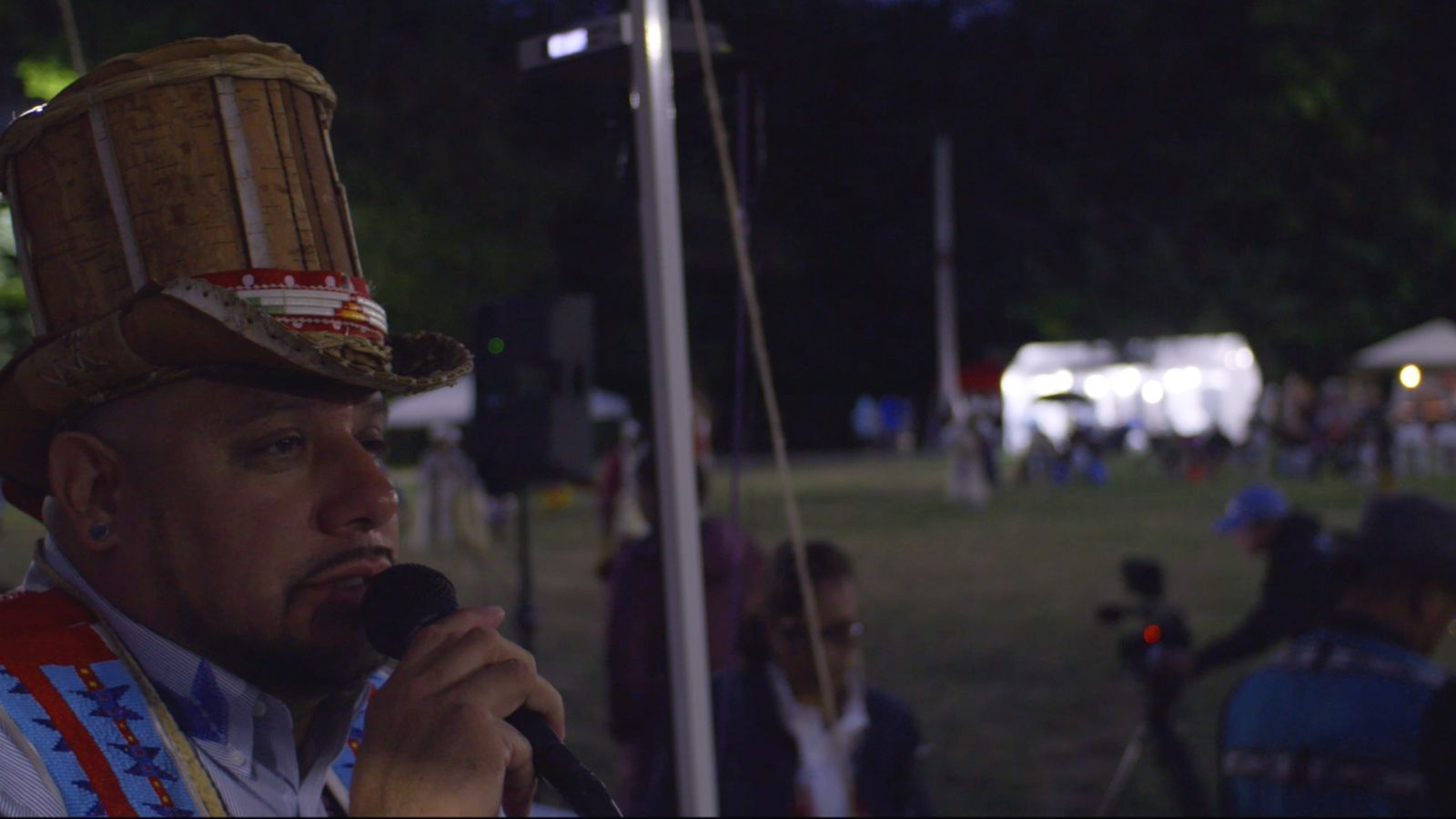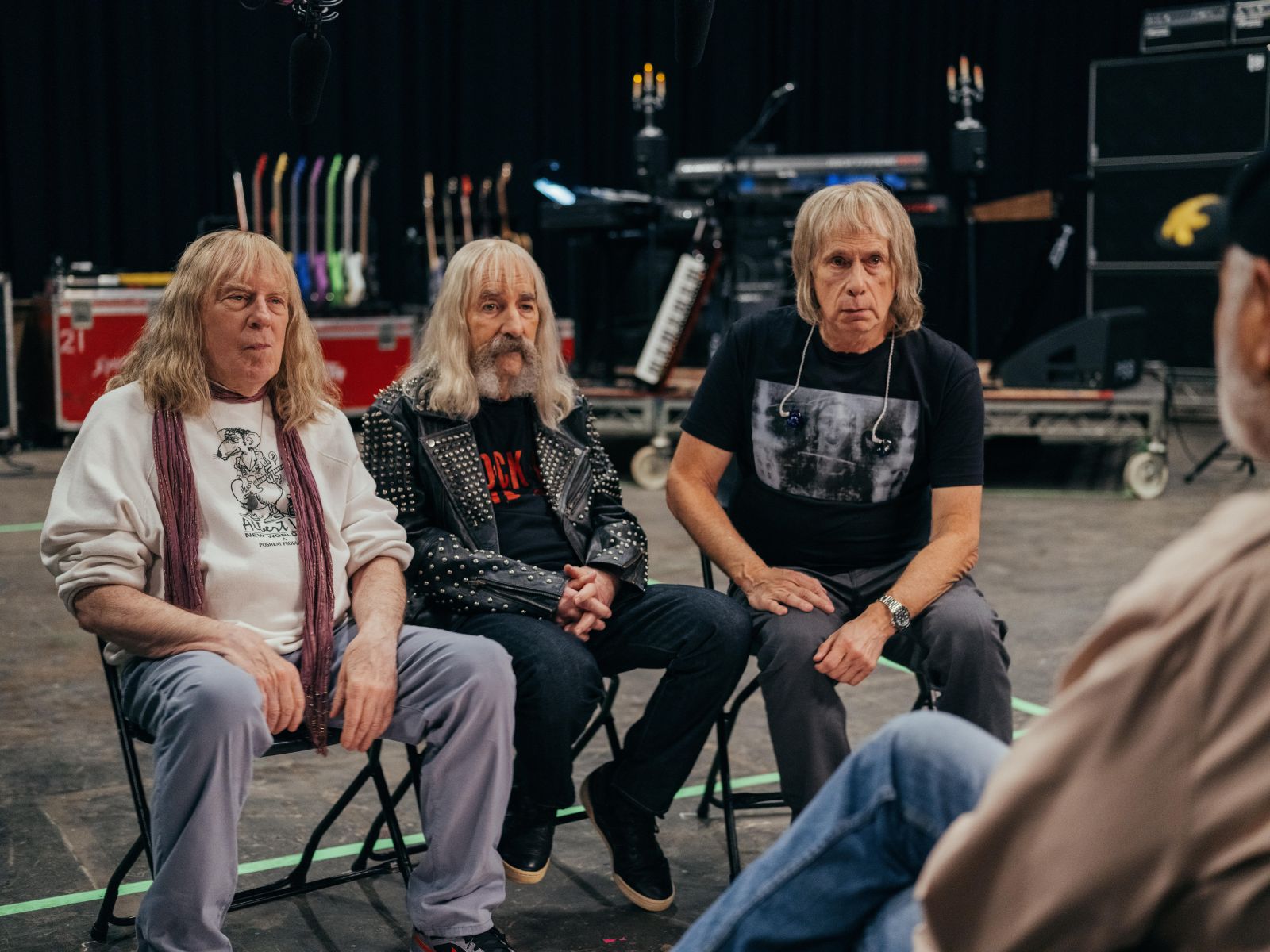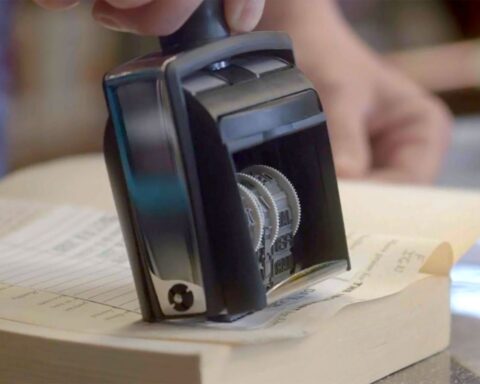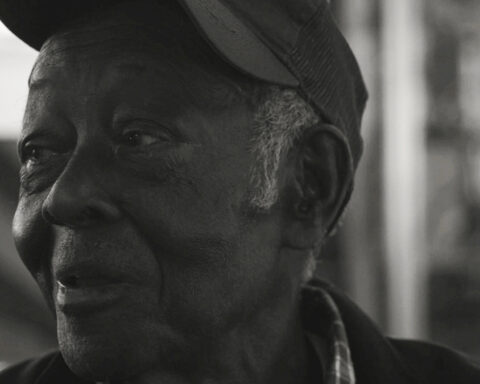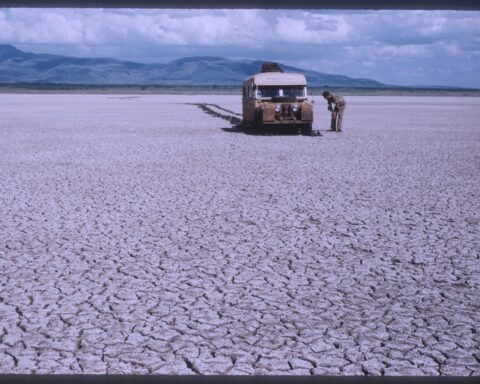Wavelengths 2: Into the Blue
(UK/South Korea/France/Iran/USA/China
Dir. Mark Jenkin, Minjung Kim, Abdellah Taïa, Maryam Tafakory, Kaiwen Ren
Wavelengths’s second programme, “Into the Blue,” offers an intriguing entanglement of spectacle, nationhood, and viewership. The eponymous idiom suggests a desire to vanish without a trace, but in the context of the indelible visual and aural traces left by this collection, the title suggests an intrepid plunge, a leap of faith.
It starts in a surprisingly wry register, with Mark Jenkin’s I Saw the Face of God in the Jet Wash, a freewheeling travelogue shot on Super 8 (and a companion piece to his feature, Rose of Nevada, also at TIFF this year). The film is emceed by Jenkin via mile-a-minute, stream-of-consciousness voiceover, threading absurdist anecdotes through double-edged homages to folklore, literature, and cinema. The Cornish filmmaker guides the viewer through a dizzying assortment of locations across the UK, and the varying degrees of separation that link them to these revered works of fiction. A concluding L.A. detour brings us full circle as he finds himself neck-deep in a city that lives and breathes the movies. The director, often found sporting a sweater and fedora, recalls an Angeleno shouting from a speeding car, “Fuck you Freddy Kreuger!” (The joke brought the house down.)
Humour persists more subtly in From My Cloud. Director Minjung Kim compiles snippets spanning two decades from her own digital database, stringing together moments across time that she deemed filmable. It deploys the process of condensation –– poeticized with onscreen text –– as a jumping off point, beginning with images of clouds, rain, and bodies of water (an especially beautiful shot watches an air pocket creep below the surface of an ice sheet). The film then expands outward to incorporate evocative fragments that capture ways of seeing, with imagery increasingly framed by various viewfinders and modes of technological mediation.
In Cairo Streets, Abdellah Taïa retrieves cam corder footage shot by the Moroccan filmmaker during an early-2000s visit to Egypt’s capital as a queer youth seeking guidance. He searches for this in an estranged lover, and the cinema of Yousef Chahine. Taïa tracks down and interviews this legendary queer director, incorporating shots from his films and juxtaposing them with footage of gay lovers in the city. The meandering film is more effective in the macro than the somewhat banal micro, but it nevertheless boasts the conceptual fortitude that was missing from the films in the previous Wavelengths programme, “Maps of Traces.”.
The shorts switch tonal gears with Daria’s Night Flowers, a spectral and tactile collage film by UK-based Iranian filmmaker Maryam Tafakory, whose work investigates the plight of Iranian women past and present. The director gave a statement in absentia decrying liberal feminists who fight for women’s rights in the global scene while remaining silent on the genocide of Palestinian women. Her words also acknowledged the ways in which women’s persecution in Iran has been used to manufacture consent for wars waged by the west. The film pulls from a vast archive of post-revolution Iranian cinema, folding together various feminine proxies into the story of Daria, a writer whose first completed manuscript gently expresses her desire for a woman called “Blue.” While Tafakory smears these repurposed images of domesticity with blooms of colour, her voiceover cryptically intones about conversion therapy drugs made from magical plants, and a jealous husband hellbent on sabotaging Daria’s subversive work.
Tafakory’s film casts a spell that lingers throughout Aftertide, Kaiwen Ren’s fleeting and flickering lamentation for whales beached along the California coast. Its strobing, fragmented imagery is plain yet abstruse, provoking sensation before thought in reliable formalist fashion. This hazy digestif serves as a fitting post-script to a collection of insightful shorts that brings Wavelengths back on track.
